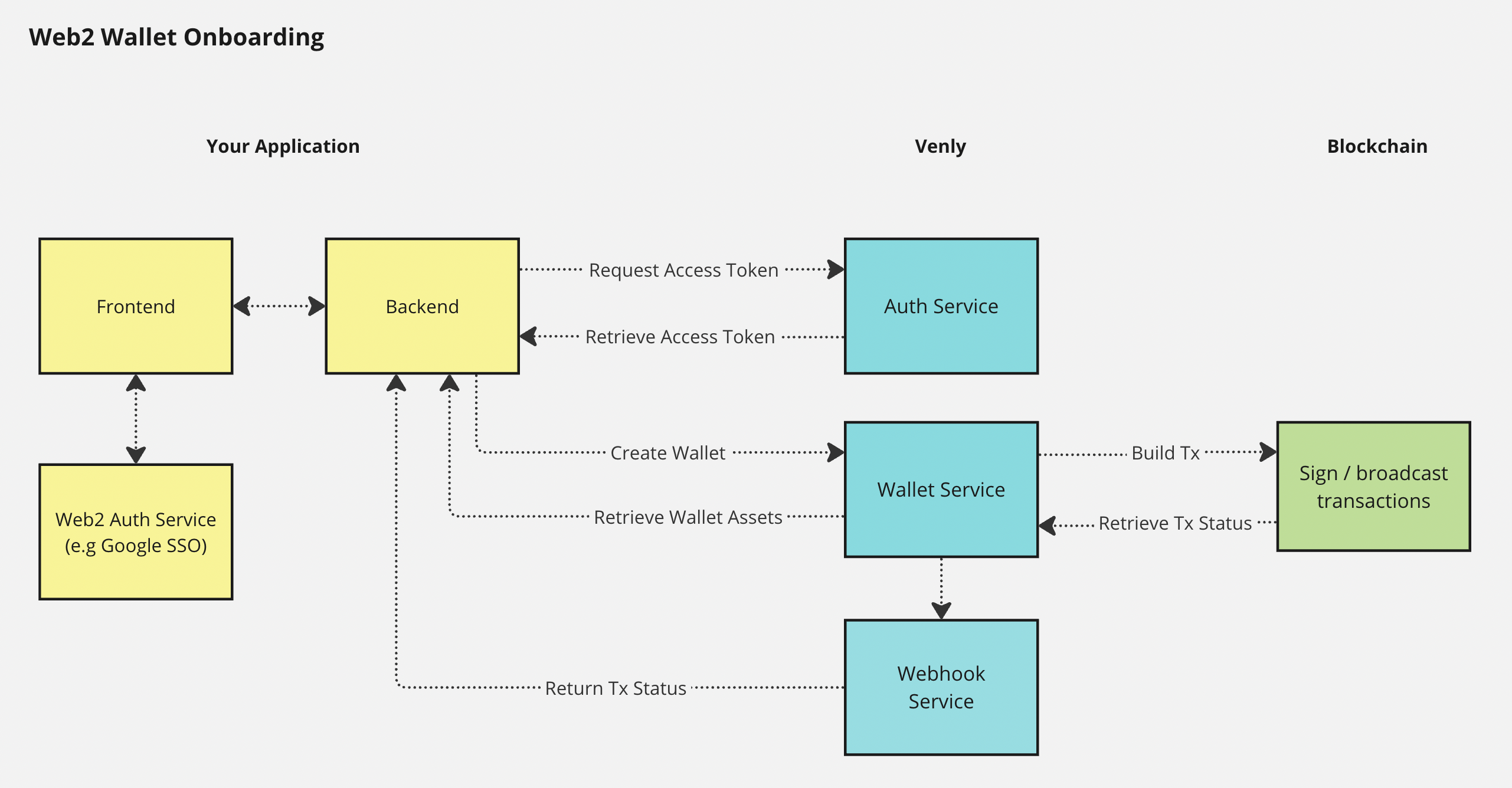Web2 Wallet onboarding
Simplify user onboarding in blockchain applications by integrating traditional web2 signup options alongside backend wallet provisioning
Onboarding users is a critical process in any application, but it might be even more challenging in an application with a blockchain component. To fully use the application's features, users often need a wallet.
For most mainstream users, that often means they first have to create a wallet using a certain wallet provider and then complete the initial onboarding flow of the application they want to use. It doesn't take a rocket scientist to understand that adding a second onboarding process is the worst thing you can do.
A more effective strategy is to provide users with a traditional web2 onboarding process, such as signing up with Google, while simultaneously provisioning a wallet through the application backend. This approach offers several benefits:
- You can create the most simple onboarding flow
- A wallet can be created at any moment in time. It doesn't need to be during onboarding; it can be created just before it is required.
- Blockchain technology is pushed to the background, which hides its complexity from the user.
The following technical architecture details how to structure your application to seamlessly accommodate this simplified onboarding flow from the user's perspective. We use the Wallet API, which allows us to create blockchain wallets and store digital assets, sign messages, or perform transactions.
Guides we recommend to read
- Authentication - Requesting and retrieving the bearer token
- Create a user - Create a user account for each of your end customers
- Create a wallet- Create a wallet for your users

Services used in this example
- Wallet API - Used for the wallet creation

Schedule a demo with our team to explore tailored solutions or dive in and start building right away on our portal.
Updated 2 months ago